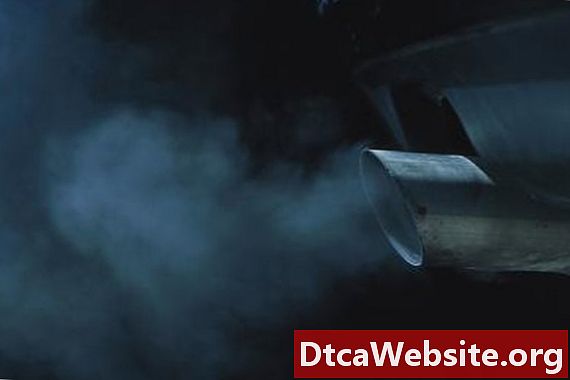
Contenu

Mufflers, or silencers, are part of your vehicles exhaust system. Tubular metal pipes carry exhaust gases from the engine away from the passenger area of the vehicle. Without some type of silencer, your vehicle would be extremely loud. Mufflers are mounted in-line with pipes and contain baffles that quiet the exhaust. Since mufflers are made from sheet metal, they will deteriorate and rust. Some mufflers may be repaired temporarily until they can be replaced.
Step 1
Chock the front wheels of the vehicle to prevent movement. Raise the rear of the vehicle with a floor jack and place jack stands under the rear frame rails just ahead of the rear wheels. Lower the jack and slide it from under the vehicle. Let the exhaust system cool down for at least one hour if the vehicle’s engine has been run recently.
Step 2
Slide under the vehicle. Check the muffler for any rust or holes. Know that sooty areas on the muffler or exhaust usually indicate where the leak is, as exhaust gases have been passing through this area.
Step 3
Wear safety goggles to protect your eyes from falling particles. Clean the rusted or damaged area of the muffler with a wire brush. Wipe dust and dirt from the area with a rag.
Step 4
Wrap muffler patch tape around the muffler directly over the hole or damaged area. Make several passes around the muffler and overlap each pass approximately ½ inch. Cut the excess tape off with a pair of scissors. Smooth down the tape with your hand. The muffler patch tape will cure once the vehicles exhaust system warms up to operating temperature. Follow subsequent steps if the muffler’s inlet or outlet pipe is rusted or damaged.
Step 5
Cut the top and bottom from the can with a can opener. The cans diameter should be slightly larger than the diameter of your muffler inlet or outlet pipe. Cut the can lengthwise from top to bottom with a pair of tin snips.
Step 6
Apply an exhaust system sealer from a squeeze tube around the damaged area on the inlet or outlet pipe. Spread the can apart just enough so that it will slide over the pipe. Squeeze the can together with your hand. Slide a muffler clamp over the can that has the same diameter of the inlet or outlet pipe. Use two clamps on each end of the repair area, if desired. Tighten the nuts on the muffler clamps with an adjustable wrench in a clockwise direction.
Step 7
Tie the muffler up if the mounting has rusted with metal wire or lengths of wire coat hanger. Loop the wire around the frame rail or a cross member. Do not wrap wire around axles, drive shafts or suspension components.
Raise the vehicle with the floor jack and remove the jack stands. Lower the jack. Drive the vehicle until it reaches operating temperature to cure the patch tape or sealer.
Warning
- Any repair to a muffler is temporary at best, and should only be used long enough to get you to a repair shop. Have your muffler replaced with a new one as soon as possible.
Items you will need
- 2 wheel chocks
- Floor jack
- 2 jack stands
- Safety goggles
- Wire brush
- Rag
- Muffler patch tape
- Scissors
- Tin can (optional)
- Can opener (optional)
- Tin snips (optional)
- Exhaust system sealer (optional)
- 2 muffler clamps (optional)
- Adjustable wrench (optional)
- Wire (optional)


